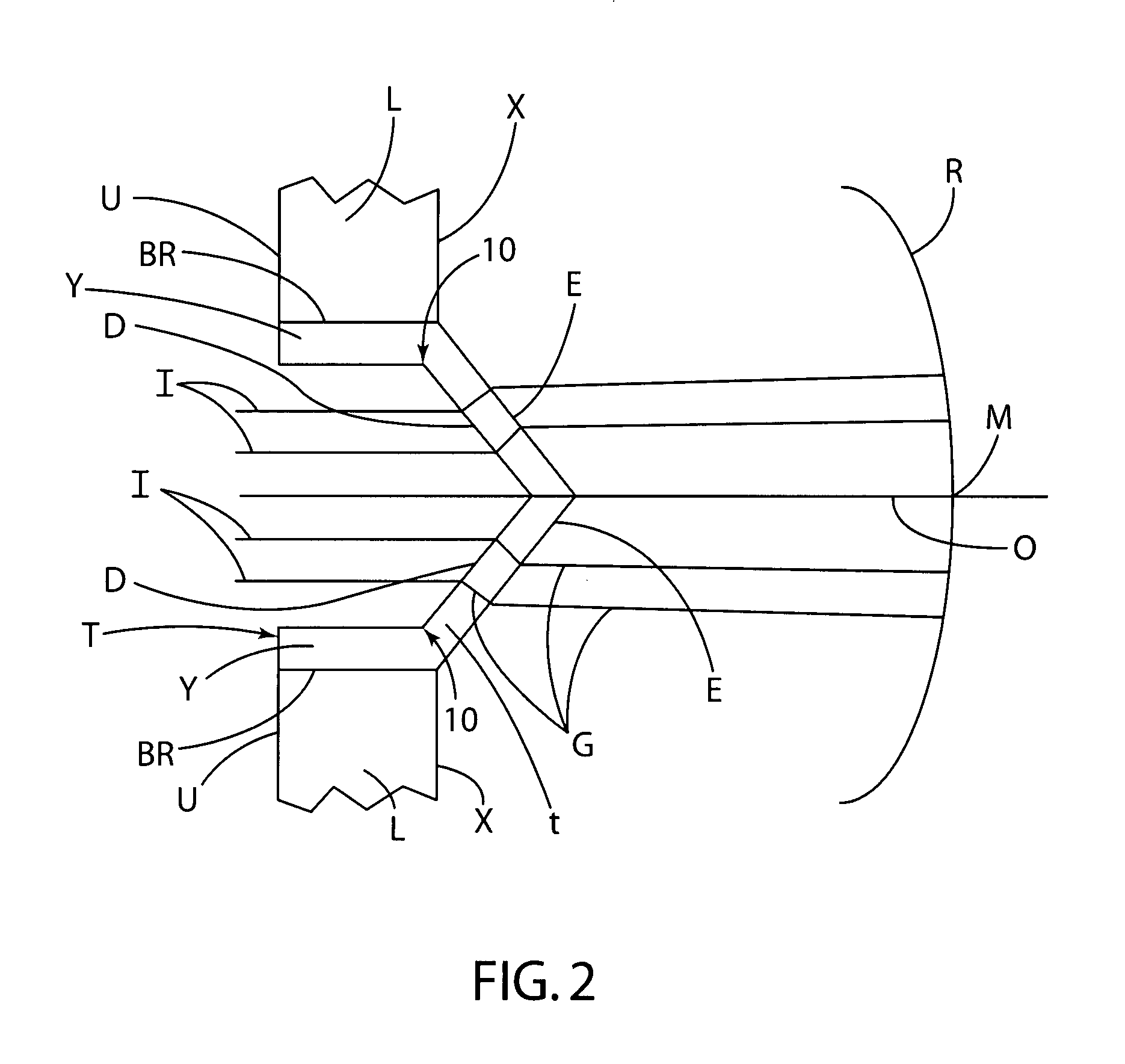Vision enhancing device
a technology of enhancing device and enhancing lens, which is applied in the direction of prosthesis, instruments, lenses, etc., can solve the problems of inability to read, drive, drive, and watch television,
- Summary
- Abstract
- Description
- Claims
- Application Information
AI Technical Summary
Benefits of technology
Problems solved by technology
Method used
Image
Examples
example 1
[0045]The design of this example is a conical surface drilled into a lens, as described above and shown in FIG. 1. The angle of incidence, B, see FIG. 6, means that the conical half angle A=90°−B. If the emergent angle from the lens is c, determined for a contact lens to be about 4.7°, and if the emergent ray is to strike the retina just outside the macula, then the interior angle, called b2, is determined by applying Snell's Law: sin b2=sin c / n. The interior ray will reach the conical surface at an angle b1=B−b2, where B is the apex angle of the wedge formed by the conical half angle A and the emergent surface. As the use of the same symbol indicates, B is equal to the angle of incidence to the lens surface. Snell's Law must be applied to the ray emergent inside the light diverging surface so that the angle of incidence is B; ie., sin B=n sin (B−b2), with b2=sin−1(sin c / n). the angle c and the index of refraction selected then determine B and hence A=90°−B. If the angles are relati...
example 2
[0047]Referring to FIG. 2, the entry and emergent surfaces are seen to be parallel (or coaxial with the same conical angle, to be precise). In this case, the incident and emergent rays will be parallel, with the emergent ray displaced away from the incident as shown. Snell's Law provides the amount of displacement for a given conical angle A. Again the incident angle for Snell's Law is B, see FIG. 6, where A=90°−B. The parameter of interest is the displacement, since this is the way the light is directed outside the macula. The displacement depends on the angle of incidence, the index of refraction, and the thickness t of the lens having the light diverging surface D thereon. Using Snell's Law, one finds sinb1=sinB / n. To calculate the displacement, one obtains the length of the ray's path in the glass, L=tcos b1, where t is the thickness (to be determined). Then the displacement is d=t cos b1 sin (B−b1). If one takes n=1.5, and the displacement, d, is required to be 2 mm, and B is s...
PUM
 Login to View More
Login to View More Abstract
Description
Claims
Application Information
 Login to View More
Login to View More - R&D
- Intellectual Property
- Life Sciences
- Materials
- Tech Scout
- Unparalleled Data Quality
- Higher Quality Content
- 60% Fewer Hallucinations
Browse by: Latest US Patents, China's latest patents, Technical Efficacy Thesaurus, Application Domain, Technology Topic, Popular Technical Reports.
© 2025 PatSnap. All rights reserved.Legal|Privacy policy|Modern Slavery Act Transparency Statement|Sitemap|About US| Contact US: help@patsnap.com



